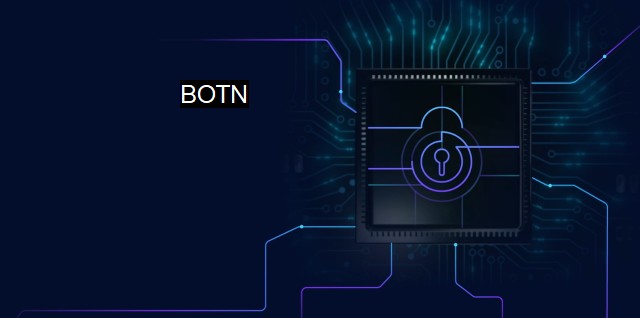What is BOTN?
Inside the World of BOTN: Exploring the Dark Underbelly of Botnets and Their Malicious Purposes in Cybersecurity
"BOTN" , or Backdoor Trojan Network, is a term related to cybersecurity and antivirus that denotes a threat widely prevalent in cyberspace.Backdoors and Trojans are two different sophisticated tools used in the creation of malware, which significantly contribute to understanding the complex world of viruses. Backdoors are malicious pieces of software that give unauthorized access to an infected system. They bypass the regular authentications or security procedures, allowing the attacker to control the compromised system remotely.
On a parallel note, Trojans are pieces of malicious code hidden within a legitimate software program. They perform functions that are unknown and unwanted by the user. Just like the famous "Trojan Horse" from which its name is derived, this malware type hides its malicious intentions and appears as harmless software.
Combining these two effective cyberattack tactics, a Backdoor Trojan Network (BOTN) is formed. It infects systems around the world to form a network of compromised machines called botnets. It typically aims at data theft, launching DoS attacks, sending spam, and allowing the attacker access to the device and its connections.
Once a botnet is in place, cybercriminals can control infected systems remotely without the user's acknowledgment. Operating under the radar, they can exfiltrate sensitive information, including personal or financial data or conduct disruptive cyber activities as per the attacker's intentions.
The unassuming nature of backdoor Trojans poses a risk to system safety since their operational procedures are surreptitious and cunningly designed. BOTN is one of the most devastating threats to cybersecurity, primarily when it targets large-scale networks like corporations, causing widespread damage or financial loss.
What exacerbates this epidemic is the criminals' clever manipulations that bypass antivirus software. While the semantics might denote a singular instance (Backdoor Trojan Network), BOTN activities are usually performed in a proliferative swarm like a virtual hive of nefarious intentions orchestrated by malicious groups.
Reliable cybersecurity practices can deter such threats. Regular system updates, downloading software from trusted sources, avoiding clicking on random email links, and using reliable antivirus programs are imperatives in keeping systems safe. Cybersecurity is incomplete without proper user awareness and robust, updated systems security.
Backdoor Trojan Networks are formidable cyber threats because they are highly covert, deceiving, and challenging to decode without proper cybersecurity measures in place. But understanding their anatomy – the coupling of backdoors and trojans – is crucial for maintaining digital hygiene.
The threat of BOTNs underscores the need for aggressive, proactive cybersecurity measures. Antivirus software, firewalls, and other protective programs act as digital sentinels against these stealthy invaders. Equally so, all individuals forming part of a network would have to be cognizant of the evolving cyber threat environment and play their part to counter the escalating challenges.
BOTNs undeniably pose a critical challenge to various sectors, from individual users to large corporations. Therefore, appropriate precautions and continuous development of cyber defense strategies are vital to counter these cyberattacks. Uncertainty is a core characteristic of digital landscapes, and a Backdoor Trojan Network is a living embodiment of this principle. Shielding against such threats requires a dynamic, collaborative approach and vigilance - reinforcing the fact that anyone and everyone operating within the digital hemisphere are indeed vital cogs in maintaining cybersecurity.

| | A | | | B | | | C | | | D | | | E | | | F | | | G | | | H | | | I | | | J | | | K | | | L | | | M | |
| | N | | | O | | | P | | | Q | | | R | | | S | | | T | | | U | | | V | | | W | | | X | | | Y | | | Z | |
| | 1 | | | 2 | | | 3 | | | 4 | | | 7 | | | 8 | | |||||||